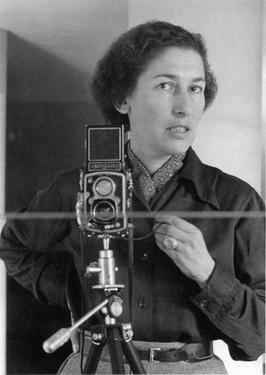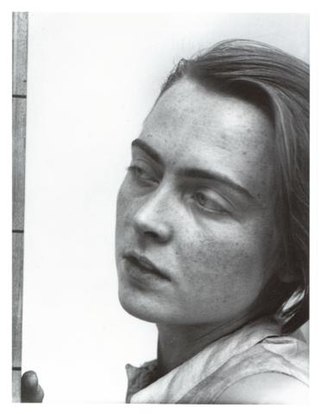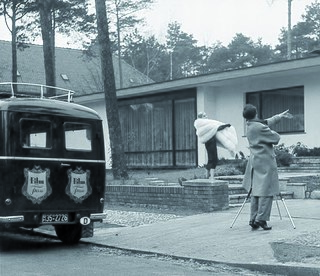
Will McBride was an American photographer in reportage, art photography and book illustration as well as a painter and sculptor.

Gisèle Freund was a German-born French photographer and photojournalist, famous for her documentary photography and portraits of writers and artists. Her best-known book, Photographie et société (1974), is a expanded edition of her seminal 1936 dissertation. It was the first sociohistorical study on photography as a democratic medium of self-representation in the age of technological reproduction. With this first doctoral thesis on photography at the Sorbonne, she was one of the first women habilitated there.

Lothar Wolleh was a well-known German photographer.

Ilse Bing was a German avant-garde and commercial photographer who produced pioneering monochrome images during the inter-war era.

Sibylle Bergemann was a German photographer. In 1990, she co-founded the Ostkreuz photographers agency. She is remembered for documenting developments in East Berlin during the Communist era and for her international assignments for Stern and later for Geo.
Frieda Gertrud Riess was a German portrait photographer in the 1920s with a studio in central Berlin.
Hildegard Ochse was a German photographer.

Arno Fischer was a German photographer and university teacher.
Roger Melis was a German photographer specialising in portraiture, photo-journalism and fashion photography.

Helga Paris was a German photographer, known for her photographs of daily life in East Germany. She photographed theatre, and then turned to a series of people and streetscapes, such as Garbage Collectors (1974), Berliner Kneipen (1975), Leipzig Hauptbahnhof (1981), self portraits, and houses and faces from Halle for an exhibition that was cancelled in 1986. Her works, shown internationally, received recognition especially after German reunification as documents of a past.
Stefan Heyne is a German photographer and stage designer. He lives and works in Berlin.

Elisabeth Hase was a German commercial and documentary photographer active in Frankfurt from 1932 until her death in 1991, at the age of 85.
Sabine Hornig is a German visual artist and photographer who lives and works in Berlin. Her work in photography, sculpture, and site-specific installation art is known for her interpretations of modernist architecture and contemporary urban life. Her work has appeared in solo exhibitions throughout the world, including Double Transparency at Art Unlimited Basel in Switzerland (2014) and Projects 78 at the Museum of Modern Art in New York (2003), and in numerous group exhibitions at institutions like the J.Paul Getty Museum in Los Angeles and ICA London.

Evelyn Richter was a German art photographer known primarily for social documentary photography work in East Germany. She is notable for her black & white photography in which she documented working-class life, and which often showed influences of Dadaism and futurism. Her photography is focused on people in everyday life, including children, workers, artists and musicians.

Franz Christian Gundlach was a German photographer, gallery owner, collector, curator and founder.

Peter Keetman was a German photographer.

Herlinde Koelbl is a German photographic artist, author and documentary filmer.

Lorenz Kienzle is a German photographer. He has been living in Berlin since 1991.
Ute Mahler is a German photographer. In 1990 she and her husband Werner Mahler were two of the seven co-founders of the "Ostkreuz" photography agency. Between 2000 and 2015, she was a professor of photography at Hamburg University of Applied Sciences.
Stefan Moses was a German photographer living in Munich.













